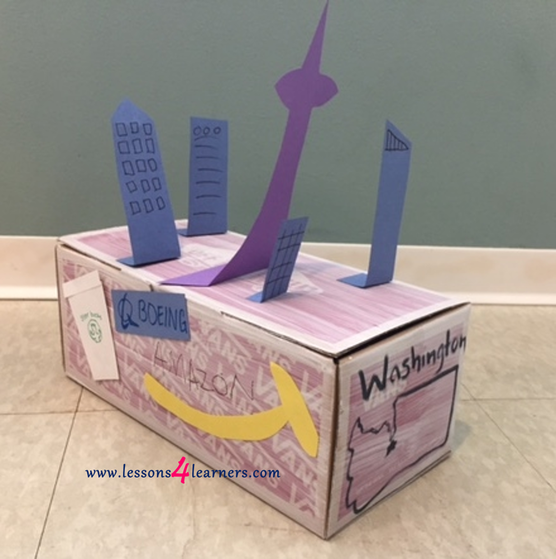Parade Float Research Project
Lesson Plan:Activity:
Parade Float Research Project
Lesson plan developed by Aurora Tollestrup BS Ed.
Age Group:
Objectives:
Children will:
EALR 3
Writing Standards K-5
Grade 3 Research to Build and Present Knowledge 7. Conduct short research projects that build knowledge about a topic. |
|
Materials:
|
Procedure:
- Invite the children to research a topic that they are interested in.
- You may find it helpful to give them an umbrella category to choose their topic from, for example: animals, historical figures, states, etc.
- Children should be given ample time (1-2 weeks) to research their topic both using internet sources and the library.
- Children should be given the research template worksheet to complete during their research.
- After completing their research, children should write a 5 paragraph essay about their research topic.
- The next portion of the lesson will be for each student to create a “parade float” for their research topic.
- They can use whatever they would like to create a visual representation of their research topic.
Assessment:
Assess the children on the following:
- Research essay and research skills
- The rationale of the parade float visual
Click on the course icon for enrollment information.
Student-Led School-Age Classroom
|
Many school-age classrooms have some STEM (science, technology, engineering and math) curriculum already in place. STEM is the area of study that is usually considered when the notion of student-led learning is brought forth. While STEM instruction does lend itself very easily to the student-led school-age classroom, all subjects and educational units can be connected with student-led learning. Perhaps there is a great deal of interest in a computer game where the player builds towns and buildings, creating a small city or neighborhood. Teachers can use the interest and strong desire to play this game as an opportunity to scaffold history or social studies skills. Invite students to build a medieval village or Egyptian pyramid using this computer game. This will allow them to apply their prior knowledge, love for a game, and new knowledge about a particular subject. |
Some teachers will take some elements from popular social media sites and use those to create character profiles for a literature unit. Some may use the idea of hashtags or text messaging in their lesson plans. This presents ideas and content in a manner that is easy to understand for the older school-age child who may be accustomed to these things in their extra-curricular lives. It also makes the lesson fun and engaging which will motivate success in students.
Another commonly used method of student-led instruction for school-age children is in the use of technology. There are numerous programs and educational applications that are available on computers and tablets for students to explore and research their interests. The great thing about technology for student-led learning is that students naturally gravitate toward technology and typically enjoy using it.
Another commonly used method of student-led instruction for school-age children is in the use of technology. There are numerous programs and educational applications that are available on computers and tablets for students to explore and research their interests. The great thing about technology for student-led learning is that students naturally gravitate toward technology and typically enjoy using it.












